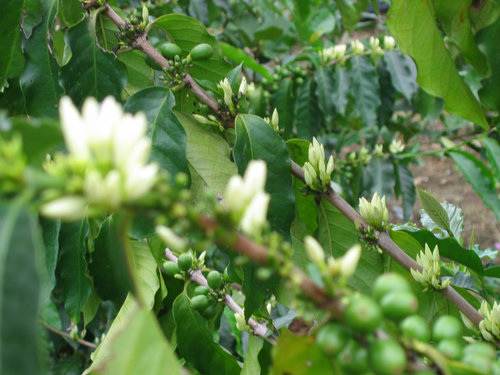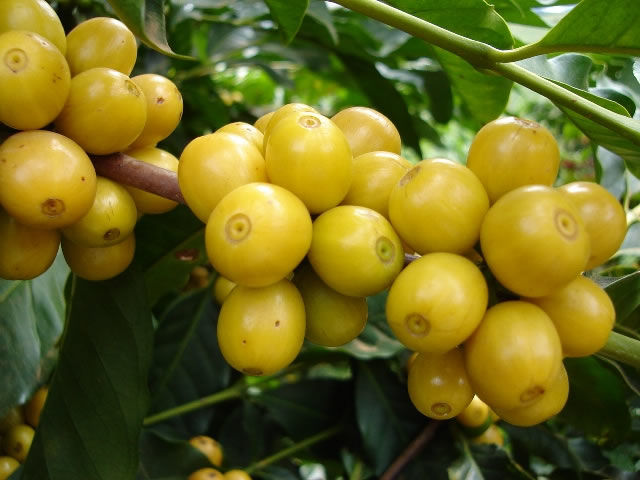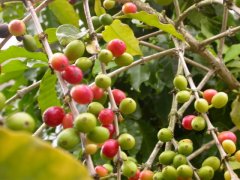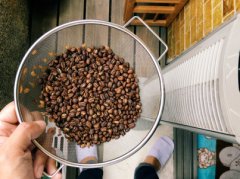How to make Geisha Rosa Coffee / Geisha Coffee in Rosa Village, Ethiopia
For professional baristas, please follow the coffee workshop (Wechat official account cafe_style)

For me, of course it's siphon! I found that I have a complex for siphon pots, mainly from my experience of washing petri dishes and test tubes for no less than 10000 times in the microbiology laboratory. I can wash them without dripping water on them (there is no technical difficulty). But no matter how much you wash the siphon pot, it's impossible to do it.
Comparison between siphon and hand flushing
We have said that "in general, the thickness of coffee powder is proportional to the extraction time", that is to say, the thicker the coffee powder, the longer the extraction time, and the finer the extraction time is. If the kettle is pressed for about 4 minutes, the Italian style is concentrated for about 30 seconds. Of course this is not absolute. The coffee powder used for siphon can be coarse or fine, even as concentrated as Italian, as long as you know how to balance the water temperature, stirring, firepower, etc. (but don't be too fine to block the strainer). Hand flushing is different.
On the water temperature of both, the water temperature of hand washing will gradually decrease, while the siphon will continue to heat, and the siphon pot can make the hand effect more easily (light or less stirring, low water temperature, coarse powder, short time). However, it is difficult to make the siphon coffee effect (conjecture-need to be verified in practice).

Some people ask, how many milliliters is the "three-person" in the siphon pot for three people? This is a good question, many people have asked it, but it is not easy to get a detailed answer. Quite simply, the volume of coffee in the coffee cup after siphon making is about 100ml, 200ml and 300ml for one person and three people, respectively, but this is not the definition for the water scale under the siphon pot.
The experimental results show that every 1g of powder absorbs 2~3ml water. In order to keep the final coffee liquid about 100ml, 120~130ml water is needed in the case of 10g powder per person. As a result, 20g flour for two people needs 240,260 water, and 30g flour for three people needs 360~390ml water. That is to say, there is a water gradient of 120 to 130.

I have verified that the 3-person share of Hario (Glass King, Japanese brand) is about 390ml, that is to say, the water gradient of 130mm 260Gash 390 (different brands may be different; Taiwan-made siphon pots may also be different from Japanese-made siphon pots), so it is very clear that the powder ratio of 112mm 115 can be converted into the required amount of powder, which can be added or subtracted according to individual taste.
As long as you know that's what you want, no one will say "no". If you say so, you can think of the biggest difference between Buddhism and Christianity: Buddhism has room for people all over the world, including pagans, while Christianity says that pagans will go to hell. Russell says that jagged polymorphism is the source of happiness. This is how coffee is made.

When you encounter a difference, you can ask why it is different and don't deny it easily, but it will be more interesting to have a clear idea in the industry. However, in my understanding, "willfulness" should be a kind of "restrained freedom".
Important Notice :
前街咖啡 FrontStreet Coffee has moved to new addredd:
FrontStreet Coffee Address: 315,Donghua East Road,GuangZhou
Tel:020 38364473
- Prev

How to make a good manning coffee? what are the special characteristics of manning coffee
Communication of professional baristas Please pay attention to Coffee Workshop (Wechat official account cafe_style) Manning Coffee is full of slight acid, mixed with the richest aroma, making it very easy to appreciate the lively factors in moderation and fragrance. It confuses many suitors with its outstanding taste. The Dutch first introduced Arabica seedlings to Ceylon and Indonesia in the 17th century.
- Next

What are the characteristics of manning coffee? how much is the cheapest manning coffee?
Professional coffee knowledge exchange more coffee bean information please follow the coffee workshop (Wechat official account cafe_style) correct understanding of Golden Manning Coffee, either golden manning or golden manning manning is not the name of the producing area, place name, port name, nor the name of the coffee variety, how did it get its name? Actually, it's Indonesian.
Related
- Detailed explanation of Jadeite planting Land in Panamanian Jadeite Manor introduction to the grading system of Jadeite competitive bidding, Red bid, Green bid and Rose Summer
- Story of Coffee planting in Brenka region of Costa Rica Stonehenge Manor anaerobic heavy honey treatment of flavor mouth
- What's on the barrel of Blue Mountain Coffee beans?
- Can American coffee also pull flowers? How to use hot American style to pull out a good-looking pattern?
- Can you make a cold extract with coffee beans? What is the right proportion for cold-extracted coffee formula?
- Indonesian PWN Gold Mandrine Coffee Origin Features Flavor How to Chong? Mandolin coffee is American.
- A brief introduction to the flavor characteristics of Brazilian yellow bourbon coffee beans
- What is the effect of different water quality on the flavor of cold-extracted coffee? What kind of water is best for brewing coffee?
- Why do you think of Rose Summer whenever you mention Panamanian coffee?
- Introduction to the characteristics of authentic blue mountain coffee bean producing areas? What is the CIB Coffee Authority in Jamaica?

